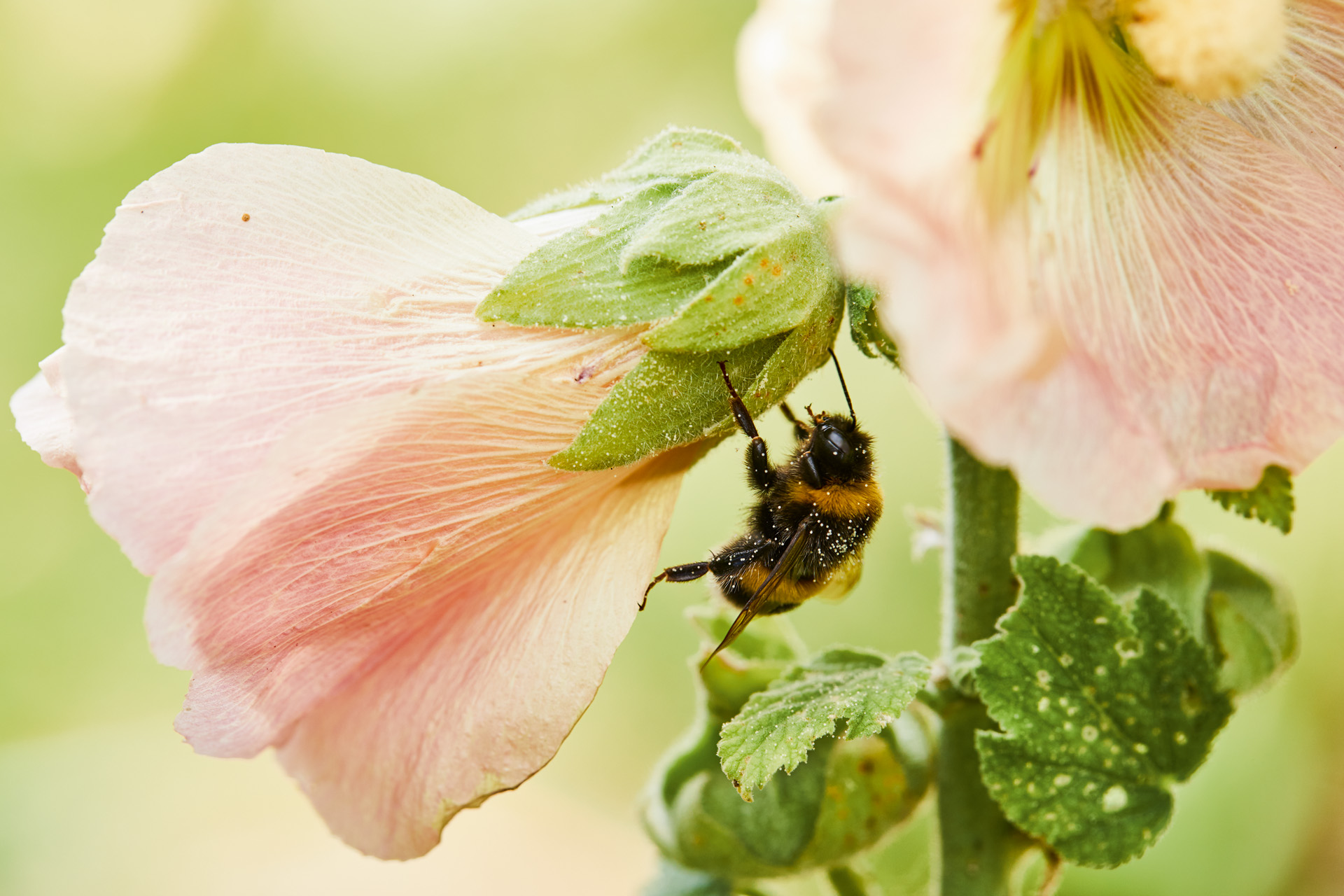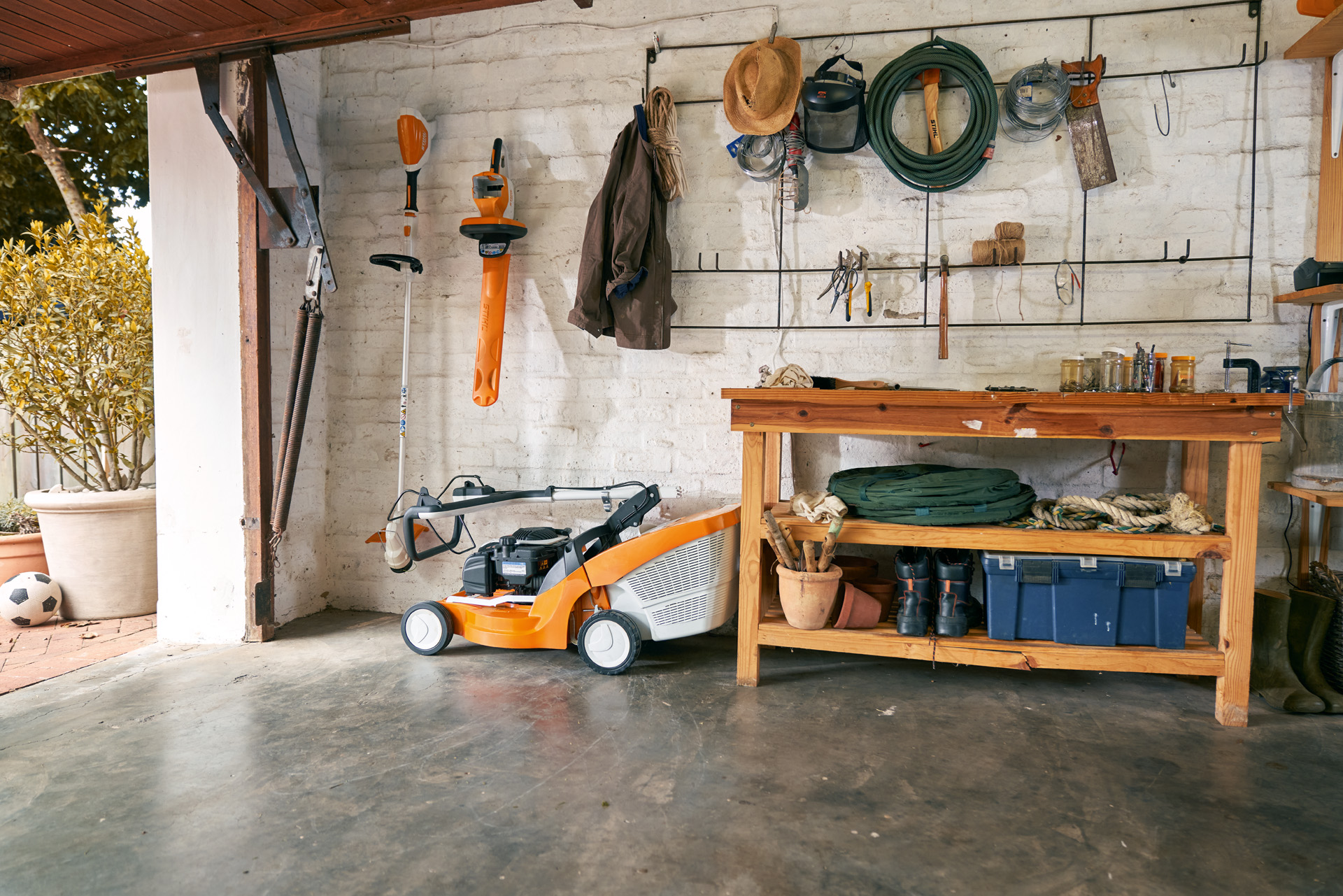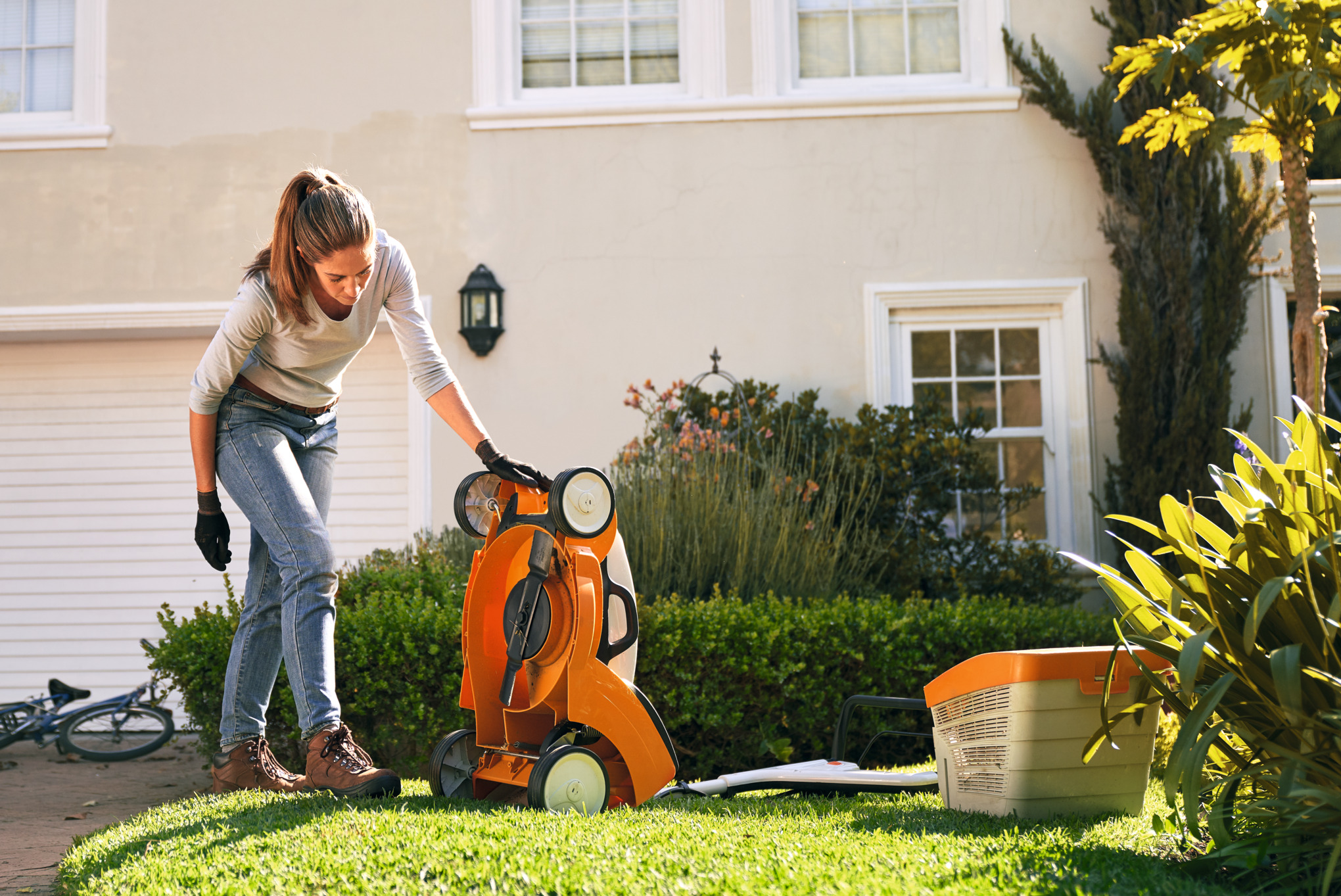Winter gardening jobs
A lot of plant activity stops for winter, but your garden still needs care! We take you through jobs for protecting and preparing your garden through the coldest time of year.
26.03.2025

Winter gardening jobs: preparing for winter
As temperatures drop, the garden relaxes into its winter break – but that doesn’t mean that there are no jobs which need to be done. When preparing a garden for winter, potted plants should be brought in or protected before the first hard frosts. Keep an eye out for snow, which brings advantages and disadvantages: a blanket of it can protect winter vegetables and shrubs from damaging overnight frosts on cloudless nights – but thick snow is very heavy, and may break and damage what’s growing in your garden. While evergreens such as bamboo, cherry laurel and thuja have no problem with a light powdering of snow, heavier deposits should be shaken or swept off. Ponds and greenhouses should also be kept free of snow.

Winter gardening jobs: putting your tools away
We recommend careful winter storage of devices and power tools that are not used over the winter months. Briefly inspect your robotic lawn mower, chainsaws, and hedge trimmers and clean them before storing them safely and correctly.
If you have a water supply in the garden, it’s a good idea to put it on your list of early winter gardening jobs to tackle: switch off the supply to the tap from inside, then let it run until completely empty – this means you can be sure that there is no remaining water to freeze and crack the pipe. Empty the garden hose too, and store it, along with any watering cans, somewhere frost-protected.
This is a good time to take down your bird boxes, remove old nests from them and clean them out with boiling water – it’s not unusual for birds to congregate in these boxes for warmth in winter, so make them pest-free and welcoming.
Once there’s frost on the ground we recommend you avoid walking on the grass while you go about your winter gardening. Because the blades contain a lot of water, they can easily snap under your weight once frozen; this will show up as a muddy path in winter and then as yellow footprints when the weather gets warmer.
Fallen leaves offer natural winter insulation
A great winter gardening tip is to use the autumn leaves on the ground to your benefit. It makes a great protective layer over beds and under shrubs, keeping soil moist and protected from frost. Sensitive and young plants particularly benefit from a protective layer of leaves over winter, and under shrubs you can even keep the leaves in a thick layer more than 5 cm deep. To prevent the wind from blowing them back into the garden, spread soil over the leaves if necessary.
Evergreen but frost-proof varieties such as thyme and lavender benefit from a light cover of spruce or fir brushwood which protects against transpiration and drying. If you have roses in your garden, bear in mind that the grafting union just below the soil is vulnerable; pile up some earth or lay out some spruce brushwood to protect it.

Winter garden preparation: clearing leaves from the lawn
The lawn gets hardly any air if it’s covered through winter – but it can develop fungus which means more work down the road. Rather than laboriously raking the lawn, we suggest you tackle this job by mowing fallen leaves away before the first frost – as you do so, your grass catcher box will fill up with a mixture of grass and leaf clippings. This makes great compost or can be used as mulch. Bear in mind that oak leaves are high in tannic acid and do not decompose quickly; while you may not want to add them to your compost, they can be used as mulch around rhododendrons.
You can spread foliage over beds and under shrubs with a rake, though a leaf blower makes the job even easier. By the time next year’s gardening season starts they will have mostly broken down, and anything that remains can be composted.
Any vegetables harvested and stored before winter should be regularly checked in their storage location. Remove rotten vegetables or any that have developed mould as early as possible, before this issue affects the entire harvest – the same applies for vegetables harvested in winter. Stored vegetables stay nice and firm well into spring if you cover them with a little sand each time you remove one.
For all other winter gardening jobs we’ve put together a month-by-month guide.
Some cold hardy winter-flowering plants
- Fragrant viburnum (viburnum x bodnantense Dawn): in mild winters, from November
- Witch hazel (Hamamelis species): from January to March, before leaves emerge
- Winter jasmine (Jasminum nudiflorum): December to February
- Lenten rose (Helleborus orientalis): February to the end of March
- Christmas rose (Helleborus niger): depending on the weather, blooms from December to the end of February.
- Round-leaved cyclamen (Cyclamen coum): February to April
- Snowdrop (Galanthus nivalis): January and February
- Winter aconite (Eranthis hyemalis): February and March
- Winter-flowering cherry tree (Prunus subhirtella Autumnalis): January to April and, in mild winters, from November
- Alpine heath (Erica carnea): February to April
- Winter mahonia (Mahonia x media Winter Sun): January to March

Winter gardening jobs: what to do in December
For as long as the weather is mild and no frost is expected, robust potted specimens such as oleander and agapanthus are happy left outside. You should delay bringing these plants in for winter for as long as possible, as a too-warm and dark winter habitat is stressful for them. Mediterranean varieties readily cope with temperatures around 0°C, while robust oleander and olives can even withstand temperatures down to -4°C. As such, these plants can generally survive the first frost outdoors, if kept close to the house and covered with a sheet or bubble wrap.
It usually warms up again after the first frost, often even into December – in which case there’s no need to worry. But do always keep an eye on the weather forecast: if there is a new or prolonged frosty period coming, then it’s time to finally move your pots to a sheltered winter location.
Sorting out your rose beds is another December gardening job: give them a layer of soil or bark mulch. Conifers, box bushes, bamboo, cherry laurel and other woody plants are hardy in themselves, though if you’re growing them in pots they will need winter protection to prevent drying out, as well as prolonged freezing and thawing which can damage roots. To do this, put the containers onto polystyrene tiles and wrap them up in jute, hessian or bubble wrap. Don’t forget to give them water on frost-free days; after all, evergreens continue transpiration in winter, but the soil does not keep supplying water when there’s frost.
Don’t cut back withered stems too drastically. Although they will often break over winter, they form a useful loose protective cover over flowerbeds, as well as offering shelter to many insects. Exceptions to the rule are daylilies, asters, geraniums, hostas and lady’s mantle, as their soft leaves rot easily; cut these back to a few inches above the level of the soil.
Pampas grass is a popular garden choice that unfortunately suffers greatly in the wetness of winter. Gather its long leaves up and tie them together at the top like a tent. This will keep the heart of the plant safe from winter wetness.

December gardening tip: protect winter vegetable beds
You can sow winter vegetables in your garden now, but they’ll thank you for a protective layer. Fallen leaves are great for this, as described above.
Winter gardening can still include harvesting crops. Leeks, cabbage and many other vegetables can tolerate frost and provide fresh vitamins even in winter. Some varieties of vegetable, such as spinach and lamb’s lettuce, appreciate a fleece cover to protect them from overnight frost. Some varieties such as sprouts and leeks can stay in the bed where you sowed them in autumn. Although leeks stay fresh in the ground, we have a tip to make harvesting through the season easier: move your growing leeks to a convenient spot. To do so, wait for a frost-free day to dig out leek stems with their root balls, then tuck them into some soil in a large box or bucket with drainage holes. Place it in a protected spot close to a wall – and you can harvest directly from your back door! We have also summarised how you can winterise your other beds.
Winter gardening jobs: taking care of fruit trees
Young fruit trees in particular are at risk of the lower trunk splitting in winter due to changes in temperature. These split points are then very susceptible to diseases and fungus.

To prevent this, coat the lower part of the trunk with white limewash paint; this reflects the sunlight and minimises temperature variation. Because the tree gets less warm during the day, the bark will also not split because of a dramatic change in temperature on cold winter nights.
Leaves should definitely be removed from under fruit trees by December at the latest, as should ‘fruit mummies’ – shrivelled fruits that are still on the tree. Persistent fungal spores and many other pests hibernate in leaves and old fruit and could immediately start spreading when winter is over. For this gardening job, knock off the dead fruits with a cane or use an apple picker, then dispose of them in your domestic waste or organic waste collection bin – don’t put them on the compost heap as the spores can be extremely tenacious and may infect your compost. This also applies to fallen fruit, fallen leaves, and leftovers from your vegetable harvest. Removing infection risks is a good way to avoid the need for harsher plant protection measures later.
Winter gardening jobs: what to do in January
There not too many gardening jobs that need doing in January – you can get some rest. Keep an eye on the snow though: if it collects on delicate plants they can easily break under the weight, so sweep the white stuff away before too much of it settles on leaves. Evergreens and things with fine, branched shoots offer an ideal place for snow to collect and they are particularly at risk.

Winter gardening jobs in January: rejuvenation pruning and propagating cuttings
Plants may be dormant in January, but that doesn’t mean there’s nothing you can do to tend them. Now is a great time for cutting and removing old wood, which promotes new blossoms and better fruit: any shrubs that have grown too dense can be tackled with the saw on frost-free days. Unproductive soft fruit bushes such as currants and gooseberries that have mossy twigs, or faded ornamental flowering shrubs can be rejuvenated as required: a brutal cut gives them new life. You can cut them all back to 10 cm above the ground.
Our tip: Before cutting back hard to rejuvenate a plant, tie it all up with a rope – it means you’ll have a nice, neat bundle to dispose of when you’re finished.
For most plants, pencil-thick pieces from the previous year’s growth can immediately be taken for propagation as stem cuttings. Each cutting should be approximately the same length as the secateurs, and have a bud (eye) at the top and bottom. Insert the freshly cut stem cuttings individually into sand or, if you have light garden soil, straight into a semi-shaded bed. You should always note the direction of growth when cutting, as the shoots will not grow if they are planted upside down. When you see bud growth, you know the cutting has taken root.
Winter gardening jobs: pond care
The long stems of bulrushes and many other marsh plants completely die in autumn, and they should be cut right back before they start to bud again, in spring at the latest. These often grow very far away from the bank, so it may not be that easy to cut them. If you can wait until your pond is frozen solid enough to take your weight, you can do the job easily with a lawnmower or secateurs in January.
If you have underwater plants, make sure you remove snow from the pond in winter, so they get the light they need to live. Sweep the snow away, or blow it from the frozen surface with a blower. If you have fish, you need openings in the ice to enable gas exchange – but don’t just hack a hole! Doing so can cause a shock that is deadly to fish and other animals. You can buy special ice preventers to use in winter or take a DIY approach: place a kitchen pan on the frozen surface, fill it with boiling water and wait until it has melted a hole. If you don’t want to deal with the ice, pond pumps are available to take care of gas exchange.

Winter gardening jobs: what to do in February
February brings the anticipation of warmer months ahead, and your gardening will include looking after fruit trees, for example. It is also a good time to remove diseased and dead leaves from Christmas roses and to thin out the beds. This month is primarily about preparing plants for the arrival of spring.
Winter gardening jobs in February: start seedlings and new potatoes
For a head start on garden crops, seeds for tomatoes and other varieties that are slower to germinate can be sown indoors as early as February. A bright spot or artificial grow lights give the new shoots a good start, so that by the time it comes to planting them out in the greenhouse or garden from mid-May, the seedlings are strong young plants.
If you find older seeds and aren’t sure if they’re worth growing, you can do a germination test in winter: simply place some of the seed on a damp kitchen towel and leave it to germinate. If nothing happens or if less than half of it germinates, it is no longer usable. However if it does germinate, you can sow the rest of the packet in a few weeks.

Another gardening tip for late winter: now’s the time to get new potatoes started. You can ‘chit’ or pre-germinate them in a bright place to prepare them for planting out in the garden. Do make sure you get the right potato variety though, as only genuine new potatoes should be sprouted as early as this.
The advantage of pre-germinating new potatoes is that they grow to become strong plants which cope well with still-cool soil temperatures once put in the ground in April, and are eager to keep growing. The yield for new potatoes that have been chitted is up to 20% higher than directly planted tubers. Seed potatoes may be treated with sprout inhibitor that can be removed using thermal treatment: place the potatoes in egg cartons, half-submerged in potting soil with their eyes pointing up, and set them up at 20°C. If dark green buds form, the potatoes need a lot of light but cooler temperatures around 10°C, otherwise the shoots will become long and very thin. When the buds get to a good 3 cm long, the tubers should be kept at an even lower temperature to toughen them up for the garden, and then planted out from April. After chitting early in the year, it’s another 6 to 8 weeks before they should be put in the ground.
Winter gardening jobs in February: trimming fruit trees
Once leaves have fallen from the trees it’s a good idea to thin out the crown. This is a much easier job in winter because you have a clear view of the branches. We recommend cutting back in late winter, though always during a frost-free period as the new cut sites are susceptible to damage. Cutting fruit trees at this time of year means plenty of healthy new shoots when the days get longer – particularly if the trees in your garden were able to stock their internal reserves optimally in the previous season. Later in the year you should only thin out the crowns and remove any water shoots and suckers; don’t be too guided by the old gardening adage that says you should be able to throw your hat through the crown, as it is only meant figuratively. Find out more in our detailed guide to cutting back fruit trees.
Summary: winter gardening jobs
- Prepare the garden for winter from October
- Mediterranean and other pot plants that are not frost-proof should be protected before the first frost
- In December, you should mainly dedicate your gardening time to preparing for the coldest time of year by covering and protecting plants. In January, keep plants safe from snow by avoiding damage from heavy deposits
- From February, the windowsill becomes a nursery for starting seeds or sprouting new potatoes





